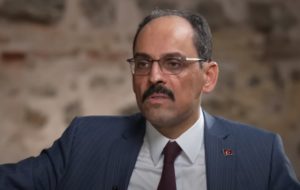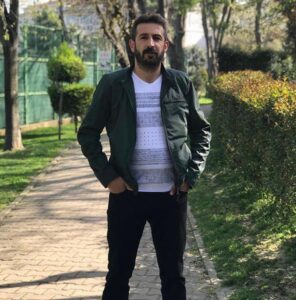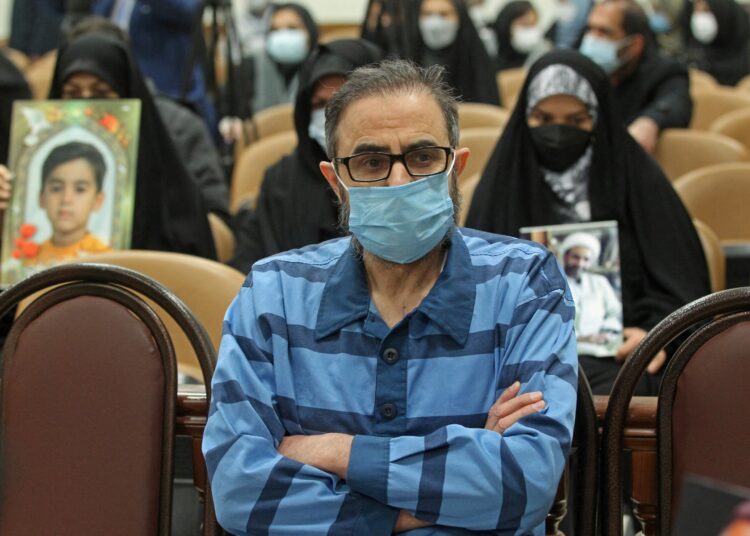Abdullah Bozkurt/Stockholm
The 2020 abduction of Swedish-Iranian dissident Habib Farajollah Chaab, also known as Habib Osayved, on Turkish soil was a covert operation jointly orchestrated by Turkish and Iranian intelligence, disguised through the use of cross-border drug traffickers as intermediaries, Nordic Monitor has learned.
To mitigate the fallout and preserve its image amid the scandal, Turkey arrested a dozen suspects who carried out the abduction as contractors, casting them as scapegoats, only to later release them after convictions on lesser charges, while the primary suspect accused of orchestrating the operation remained untouched.
A pivotal acknowledgment regarding the kidnapping emerged on Oct. 23, 2024, during a briefing to the parliamentary Justice Committee, when Fuad Midas, head of the legal affairs department at the Turkish intelligence agency (Milli İstihbarat Teşkilatı, MIT), disclosed that a key coordinator involved in the abduction was convicted merely of deprivation of liberty and sentenced to just one year and two months in prison.
While the intelligence official did not disclose the individual’s name, he was likely referring to 37-year-old Bahtiyar Fırat, the man accused of having the second-highest rank in the kidnapping operation and a relative of Naji Sharifi Zindashti, an Iranian drug trafficker with established connections to senior Turkish government officials and Iranian authorities.
Zindashti has evaded capture, while Fırat was scapegoated for the entire operation, was coerced into signing a pre-written statement and yet subsequently shielded from a severe sentence once public scrutiny of the kidnapping subsided. His brief sentence ensures he will serve no significant time, thanks to Law No. 7242 on the execution of penal measures, passed by the President Recep Tayyip Erdogan government in April 2020.
Fuad Midas, head of the legal affairs department at the Turkish intelligence agency (Milli İstihbarat Teşkilatı, MIT), revealed the lenient sentencing of the key suspect involved in the abduction of the Swedish national in Turkey:
The law has facilitated the release of numerous convicts, including rapists, murderers, drug traffickers and notorious mafia figures, ostensibly to alleviate overcrowded prisons in Turkey, while creating space for the mass incarceration of political dissidents, peaceful opponents and legitimate critics of President Erdoğan’s increasingly authoritarian regime.
The handling of the Chaab case reflects a recurring pattern in Erdogan’s Turkey, where the intelligence agency has played a central role in shaping the country’s agenda through sham legal cases, extrajudicial detentions, psychological and influence operations, the manipulation of co-opted opposition and the orchestration of false flag operations.
As a face-saving measure, Turkish authorities feigned an investigation into Chaab’s abduction, blamed Iran, detained drug traffickers implicated in the operation and then swiftly worked to close the case.
Fırat was abducted by MIT agents on Oct. 14, 2020 in Istanbul, while en route to Tehran, five days after the kidnapping of Chaab. The fact that he remained in Turkey, even after handing Chaab over to Iranian intelligence in the Turkish border province of Van, suggests that he had been assured of his safety by his handlers and saw no immediate need to flee to Iran — a country he frequently visited and where he had relatives and the protection of Zindashti’s organized crime network.
Apparently, Fırat had no inkling that he would be used as a pawn to be sacrificed and presented as the mastermind behind the kidnapping operation. He wasn’t even staying in a safe house after the incident, but instead spent the night at his sister’s home in Istanbul. The following day, on Oct. 13, 2020, his brother-in-law drove him to the airport for a midnight flight bound for Tehran.

To his shock, Fırat was detained at passport control, briefly interrogated by airport police sufficient to ensure he missed his flight and then released. It was all part of a broader MIT operation. Afterward, he got into a car to head to a nearby hotel, only to notice two cars trailing him. Realizing that Turkish intelligence was preparing to abandon him as a scapegoat for the kidnapping, he called his wife, urging her to go to the public prosecutor’s office if she didn’t hear from him soon.
As Fırat had feared, MIT intercepted him before he could reach the hotel. He was then transported to a secret location, approximately five or six hours away, indicating that he was held in what is known as MIT’s “farm” — a covert facility near the Turkish president’s palace in Ankara, where regime critics and political opponents are frequently subjected to illegal detention and harsh interrogation, often experiencing severe torture and abuse.
Fırat endured 45 days of torture at the secret compound before being transferred to the custody of police in Istanbul on Dec. 4, 2020 and formally arrested. During his illegal detention, he was coerced into following a predetermined narrative that the authorities had imposed upon him.
During the arraignment hearing, Fırat recounted the horrific ordeal he endured at the hands of MIT agents. He was subjected to prolonged hours of standing, strapped naked to a wall, while his captors poured acid on his skin, sodomized him with a baton and whipped his genitals. Fırat testified that he eventually broke under the torment and agreed to say and sign whatever the agents demanded. He was then instructed to handwrite a prepared statement and later coerced into repeating the same statement on camera.

Multiple reports have suggested that Turkish authorities were directly involved and complicit in the kidnapping of Chaab. A letter sent to Turkey on Nov. 6, 2020 by UN rapporteurs referenced a statement made on Nov. 1, 2020 by the chair of Iran’s Parliamentary Commission on National Security. The Iranian official stated that “Chaab had been returned to Iran by the Turkish authorities through the West Azerbaijan border crossing, as part of an intelligence operation.”
The UN requested clarification on the whereabouts of Chaab, who had gone missing in Turkey and urged Turkish authorities to fulfill their obligations under international human rights conventions to which Turkey is a party. In response, Turkey denied any involvement in the kidnapping, instead attributing the incident to a drug trafficker who allegedly worked with Iranian intelligence.
Chaab was the leader of the separatist Al-Ahwaziya group, the Arab Struggle Movement for the Liberation of Ahwaz (ASMLA). Based in the Netherlands, the Arab nationalist group ASMLA advocates for the secession of Iran’s Arab-majority Khuzestan province. Tehran has designated ASMLA as a terrorist organization.
The Turkish government’s response to the UN letter was delivered by the country’s permanent mission to the UN office in Geneva through a note verbale, a formal, third-person diplomatic note, dated Jan. 5, 2021. In their response, the Turkish government stated, “the outcome of the investigation clearly and unmistakably indicates that Turkish authorities had no involvement whatsoever in the events surrounding the disappearance of Habib Chaab.”

After his abduction, Chaab appeared on Iranian state television, where he was shown confessing to crimes, as part of a state propaganda campaign. It was alleged that he was tortured into making false confessions and denied access to legal representation. Following a sham trial, during which he was accused of efsad-e fel-arz (corruption on the earth), Chaab was executed in Iran on May 6, 2023.
Interestingly, the Erdoğan government declined to join the strong condemnation issued by EU member states and candidate countries following Chaab’s hanging, despite Turkey being a candidate member and the country from which Chaab was forcibly abducted and transported to Iran.
It appears that the arrest, prosecution and trial of the suspects involved in the abduction of the Iranian dissident on Turkish soil were all part of a charade orchestrated by the Erdoğan government to deflect pressure on Turkey and create distance from the case. President Erdoğan’s office leaked information to international media outlets, such as The Washington Post and Sky News, claiming that Iranian intelligence had contracted a drug trafficking network to kidnap Chaab, while vowing to severely punish the suspects involved.
The reality is that Turkish authorities have shown little interest in cracking down on Iranian intelligence operations within Turkey and, in fact, have cooperated with Iran on numerous issues over the past decade. Many senior figures in Erdoğan’s inner circle, including the former and current heads of the country’s main intelligence service, MIT — Hakan Fidan and Ibrahim Kalın, respectively — are known sympathizers of the Iranian mullah regime. Both men had worked with the Iranian Quds Force’s Turkish networks, specifically the Selam Tevhid group, which has been designated as a terrorist organization in Turkey, before joining the Erdoğan government.
It also came as no surprise that the Iranian group involved in the kidnapping of Chaab, acting on orders from Iranian intelligence, is led by Zindashti—an individual who has established close ties with senior Turkish government officials.

Zindashti is wanted by the US Federal Bureau of Investigations for his alleged involvement in a murder-for-hire plot that occurred between December 2020 and March 2021, targeting two US residents who had fled Iran. He is also accused of providing resources to facilitate the murder of another individual in the US, which led to the issuance of a federal arrest warrant by a US district court in Minnesota on December 13, 2023.
Since 1994, Zindashti has lived in Turkey, reportedly escaping a death sentence in Iran. While in Turkey, he has managed to evade accountability for crimes he has committed there, as well. His legal troubles were effectively dismissed with the help of senior officials within President Erdoğan’s inner circle. Zindashti frequently bribed judges overseeing his criminal cases, cultivated relationships with local officials from the ruling Justice and Development Party (AKP), and even placed a senior legal advisor to President Erdoğan, Burhan Kuzu, on his payroll.
Zindashti was living in a multi-million dollar luxury residence in the Zorlu Center R3 tower complex in Istanbul, using the venue for lavish parties, including sex and drug-fueled gatherings. The woman who facilitated the provision of prostitutes for him and his guests at this residence was Aliya Uzun, who at the time was a senior member of the women’s branch of President Erdoğan’s ruling AKP in Istanbul.
In a statement given to the police on March 29, 2016 as part of an investigation into a public shooting incident, Zindashti detailed how he forged a close relationship with Uzun. He explained that their first meeting occurred when Uzun brought six or seven female escorts to his apartment to entertain his guests and engage in sexual activities. Zindashti claimed that he had sexual intercourse with Uzun during this encounter and that their friendship developed from there. Uzun promised to help Zindashti acquire Turkish citizenship through her influence with the ruling party, asking for half a million Turkish lira (approximately $160,000 at the time) in return.

Zindashti, whose family tribe originally settled in areas on both sides of the Turkish-Iranian border, initially entered Turkey using a stolen Iranian identity, adopting the name of a deceased individual, Kemal Sharifi Seydani. While living in Turkey, he married a Turkish woman named Nigar Fırat, despite already being married in Iran to a woman named Leila Tamarzadeh Zaviyejaki.
Zindashti was first flagged by law enforcement in Turkey in connection with the kidnapping of a Turkish national, Ömer Eren, for ransom on Aug. 30, 2002. During the kidnapping, his accomplice was his Turkish wife Nigar’s cousin, Seracettin Fırat. The case was eventually dismissed in 2013, when Zindashti’s true identity was revealed, leading to a new criminal complaint being filed under his real name.
Zindashti was arrested again in Istanbul’s Büyükçekmece district on Sept. 24, 2007, during a drug bust in which 77.3 kg of heroin was seized. He claimed that he was made a scapegoat, while all other suspects were released in exchange for bribes. Zindashti accused gendarme intelligence officer Osman Sengul of accepting four apartments as bribes from the main suspect, Cemal Nayir, to shift the blame onto him. He served 30 months in jail and was released in August 2010 after completing the required portion of his sentence.
In an interview with Canada-based Turkish journalist Said Sefa in December 2020, Zindashti admitted to having connections within the security services of both Turkey and Iran, although he denied any involvement in the kidnapping of Chaab. He acknowledged meeting with Engin Dinç, who served as the head of the intelligence section at the Turkish Security General Directorate (Emniyet) between 2013 and 2016. During Dinç’s tenure, several bloody terror incidents occurred in 2015 as well as the failed coup attempt in 2016, events that helped Erdoğan consolidate his grip on power in Turkey, leading to the suspension of an independent judiciary and the suppression of critical voices. Dinç is currently the head of the police in Ankara.

In April 2018, Zindashti was detained in Istanbul along with six others in connection to a murder. However, six months later, a Turkish court ordered his release, stating that there was no evidence linking him to the crime. According to testimony from an investigation launched by the Council of Judges and Prosecutors, two Turkish judges confirmed that Kuzu, a former lawmaker for the ruling AKP and chief advisor to President Erdoğan, had intervened in the judicial process. Fleeing justice, Zindashti resurfaced at a funeral in September 2020 in Iran’s Urumiyeh region, surrounded by armed men, including Fırat.
There are multiple and significant flaws in the narrative provided by the Turkish government regarding the kidnapping of Chaab, which undermine its credibility. According to the version of events scripted by Turkish intelligence, Fırat and his associates abducted Chaab, who was allegedly about to meet an Iranian woman named Saberin Saeidi (also known as Zeynab Savari), described as an Iranian agent who had infiltrated the dissident group. The kidnapping supposedly took place at a gas station located about 80 kilometers from Istanbul’s Sabiha Gökçen Airport. From there, Chaab was drugged, placed into a van and transported over 1,600 kilometers to eastern Turkey, where he was smuggled into Iran, all without encountering any obstacles or glitches during the entire operation.
The fact that the car transporting Chaab across a long stretch of land, from Istanbul to Van, was never stopped only fuels further suspicions. Turkish police and gendarmerie operate numerous checkpoints and roadblocks along that route, particularly in eastern Turkey, where drug smugglers, human traffickers and terrorist groups are active. The only plausible explanation for the vehicle passing through these security measures unchecked is that MIT had already informed the authorities in advance that the car should not be stopped, ensuring the smooth progression of the operation.
The FBI issued an arrest warrant for Naji Sharifi Zindashti:
The Turkish indictment regarding the suspects presents a Hollywood-style narrative, portraying common criminals who suddenly act like professional spies. According to the indictment, these individuals are said to have used burner phones, acquired sophisticated sleeping pills and employed complex surveillance and evasion tactics. Turkish authorities concluded that a team of three inexperienced individuals — Fırat, his relative Fikret Fırat and a childhood friend, Fatih Diri — were able to carry out a kidnapping in Istanbul, a city constantly monitored by public surveillance cameras, making the entire operation seem highly improbable.
The three men allegedly worked out the final details of the kidnapping and planned their actions in a cafe located in a shopping mall heavily monitored by surveillance cameras. They are said to have made a trip to a hardware store to purchase items such as rope, plastic cable ties and a blind, which they would later use in the abduction of Chaab.
They also arranged for walkie-talkies and set up two escort cars to accompany the Volkswagen Transporter van used in the operation. Interestingly enough, in about a dozen confirmed cases of kidnappings involving government critics in Turkey, MIT has consistently used Transporter model vans, suggesting a pattern in their operations.
Chaab was transported in the van for an extended period and eventually dropped off at a house in the Şabaniye district of Van. From there, he was transferred to another vehicle and taken to a remote house in the mountainous terrain near the Başkale district, just 20 kilometers from the Iranian border. This final destination was strategically chosen, placing him close to the border for his eventual smuggling into Iran.
During this final stretch of the journey, the car was never stopped, despite the heavy presence of police, gendarmerie and military forces in the region. The border garrison, situated atop a mountain, failed to raise any alarms when it spotted a car driving alone with its headlights on at an unusual hour along a dirt road near the garrison. Instead of intervening, they allowed the vehicle to pass. Chaab was then handed over to another team, which took him across the border into Iran, raising further questions about coordination and possible complicity in the operation.
According to the indictment, the kidnappers, who were never stopped while transporting Chaab to a location near the Iranian border, were frequently stopped on their return journey. This inconsistency raises significant doubts about the credibility of the operation and suggests that the kidnappers’ movement was deliberately facilitated, while their return was subject to normal security checks, further fueling suspicions of complicity by Turkish intelligence.












